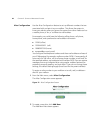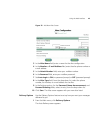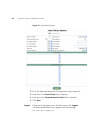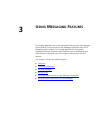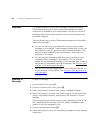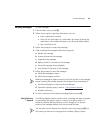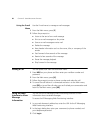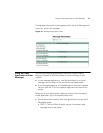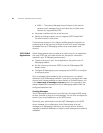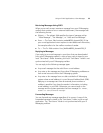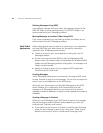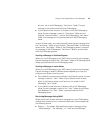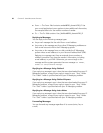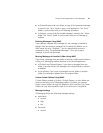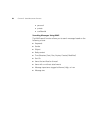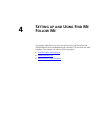52 CHAPTER 3: USING MESSAGING FEATURES
■ IMAP — The Internet Message Access Protocol is also used to
retrieve e-mail messages from a mail server but includes some
features not supported by POP3.
■ Associate a mailbox with the e-mail account.
■ Identify a third party server as your outgoing SMTP (Simple Mail
Transfer Protocol) e-mail server.
The remaining sections in this chapter provide general information on
configuring an e-mail account and how to work with e-mail messages
forwarded from an IP Messaging mailbox to an associated e-mail
account.
POP3 E-Mail
Applications
Follow these general steps to create an e-mail account in an application
that uses POP3 (ask your administrator for the specific information
required in your IP Messaging environment).
■ Create an account in your e-mail application that points to an IP
Messaging mailbox.
■ Set the incoming mail server (POP3) to be the IP Messaging DNS
domain name.
■ Configure IP Messaging as your outgoing server (SMTP), or configure
a third party server.
Once a message is downloaded to the e-mail account, it is marked
reviewed in the IP Messaging mailbox. If you do not configure the e-mail
account with a leave-message-on-server option (in Outlook Express, this
is the Leave copy of message on server option), the message is also
marked deleted and removed from the IP Messaging mailbox after the
configured retention time.
Sending Messages
Your IP Messaging administrator must identify a third-party SMTP server
to send, forward, or reply to e-mail messages. You can then configure this
server in your e-mail application as the SMTP server.
Optionally, your administrator can identify IP Messaging as the SMTP
server. However, this configuration limits the exchange of e-mail
messages to IP Messaging subscribers; you cannot send or forward
messages to external addresses, or reply to e-mail messages from external
addresses.



